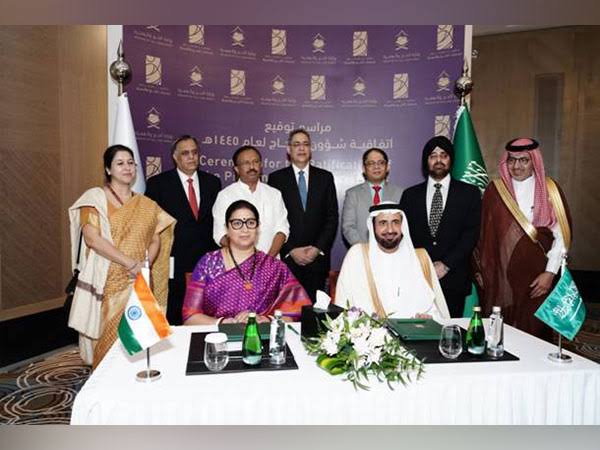Free Courses Sale ends Soon, Get It Now


Free Courses Sale ends Soon, Get It Now



Disclaimer: Copyright infringement not intended.
Context
Details
Haj Yatra: A Pilgrimage to Mecca
Meaning and Significance:
Timing:
Rituals and Acts:
Kaaba and Masjid al-Haram:
Equality and Uniformity:
Global Gathering:
Spiritual Renewal:
Community Bonding:
|
Five Pillars of Islam The Five Pillars of Islam are the fundamental acts of worship and the foundation of a Muslim's faith and practice. They are considered mandatory for all Muslims and provide a framework for spiritual and ethical living. The Five Pillars are: Shahada (Declaration of Faith): Meaning: The declaration that there is no god but Allah, and Muhammad is His messenger. Significance: It is the central tenet of Islam, expressing monotheism and the acceptance of Muhammad as the final prophet. Salah (Prayer): Meaning: Performing ritual prayers five times a day facing the Kaaba in Mecca. Significance: Demonstrates devotion, humility, and a constant connection with Allah throughout the day. The prayers are at specific times: Fajr (pre-dawn), Dhuhr (midday), Asr (afternoon), Maghrib (sunset), and Isha (night). Zakat (Charity): Meaning: Giving a portion of one's wealth (usually 2.5%) to those in need, typically the poor and needy. Significance: Fosters social responsibility, equality, and compassion. Zakat is a means of wealth redistribution and helping those less fortunate. Sawm (Fasting during Ramadan): Meaning: Abstaining from food, drink, and other physical needs from dawn to sunset during the month of Ramadan. Significance: Encourages self-discipline, spiritual reflection, empathy for the less fortunate, and a deepening of faith. Ramadan is a month of heightened spiritual awareness. Hajj (Pilgrimage to Mecca): Meaning: Undertaking a pilgrimage to the holy city of Mecca, at least once in a lifetime, if financially and physically able. Significance: Represents unity among Muslims worldwide. The pilgrimage involves a series of rituals symbolizing the actions of Prophet Ibrahim and his family, demonstrating submission to Allah. These Five Pillars provide Muslims with a clear framework for worship, morality, and community life. Following these pillars is considered essential for the fulfillment of one's religious duties and the cultivation of a strong Islamic identity. |
|
PRACTICE QUESTION Question. "Hajj, one of the Five Pillars of Islam, holds immense significance in the Islamic faith. In the context of Hajj, consider the following statements: 1."Tawaf" refers to the ritual of walking seven times counterclockwise around the Kaaba in Mecca during Hajj. 2."Ihram" is the term for the special attire worn by pilgrims, symbolizing a state of consecration. 3.The stoning of three pillars in Mina during Hajj commemorates the rejection of temptation by Prophet Muhammad. Which of the statements above is/are correct?" A. 1 and 2 only B. 1 and 3 only C. 2 and 3 only D. 1, 2, and 3 Answer: D. 1, 2, and 3 Explanation:
|
© 2024 iasgyan. All right reserved